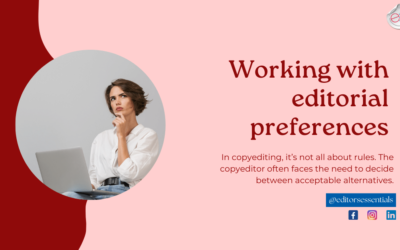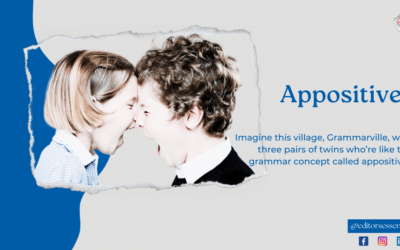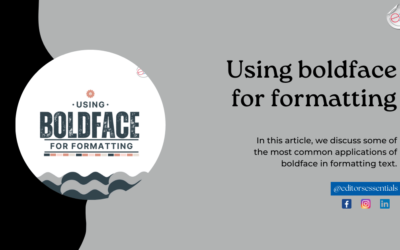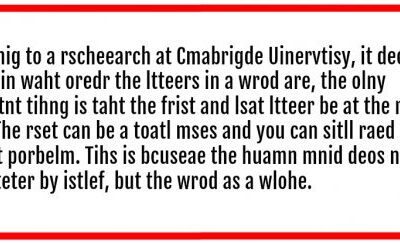What strikes you first when you hear the phrase “UK/US variants”? For most of us, it would be spelling variants. Have you ever come across UK/US variations with respect to punctuation? In our recent blog post, the author discusses some of the most common punctuation-level variations between UK and US English, drawing upon the CMoS and the APA style guide.
Working with editorial preferences (pet peeves)
Our latest blog post attempts to clarify some common confusions that a copyeditor may encounter while applying a few stylesheet requirements. We use the term “peeves” to refer to these requirements as a copyeditor may face editorial dilemmas in adhering to such requirements. Please read the blog post for further details and do let us know your thoughts.
Appositives, the twins of Grammarville
Imagine this village, Grammarville, with three pairs of twins who’re like the grammar concept called appositives: the Siamese twins – super attached, just like how necessary appositives are for a sentence’s meaning; non-identical twins – not-so-tied, giving extra details like non-restrictive appositives; and mischievous identical twins ¬– context, like knowing which twin’s who, decides their use. Identifying twins needs attention – so is the case for editors!
Using boldface for formatting
Three common types of formatting followed in the publishing industry are italics, boldface, and underlines. In a previous post, we discussed the role of italics in formatting text. In this post, let’s discuss some occurrences where boldface is used. Headings As you...
Can the Internet Impede the Skills of Copy Editors?
Slow and steady changes are not recognized but can result in a compromise in the core skills
Did you know these are editing myths?
Rules might change, myths might vanish, and only the minds which are open to learning will survive.
The most underrated villain of copy editing
What is that one type of error that may go unnoticed even under otherwise careful eyes, but can be very embarrassing when noticed, both to the author and, obviously, to the one who edited the manuscript? Read on…







